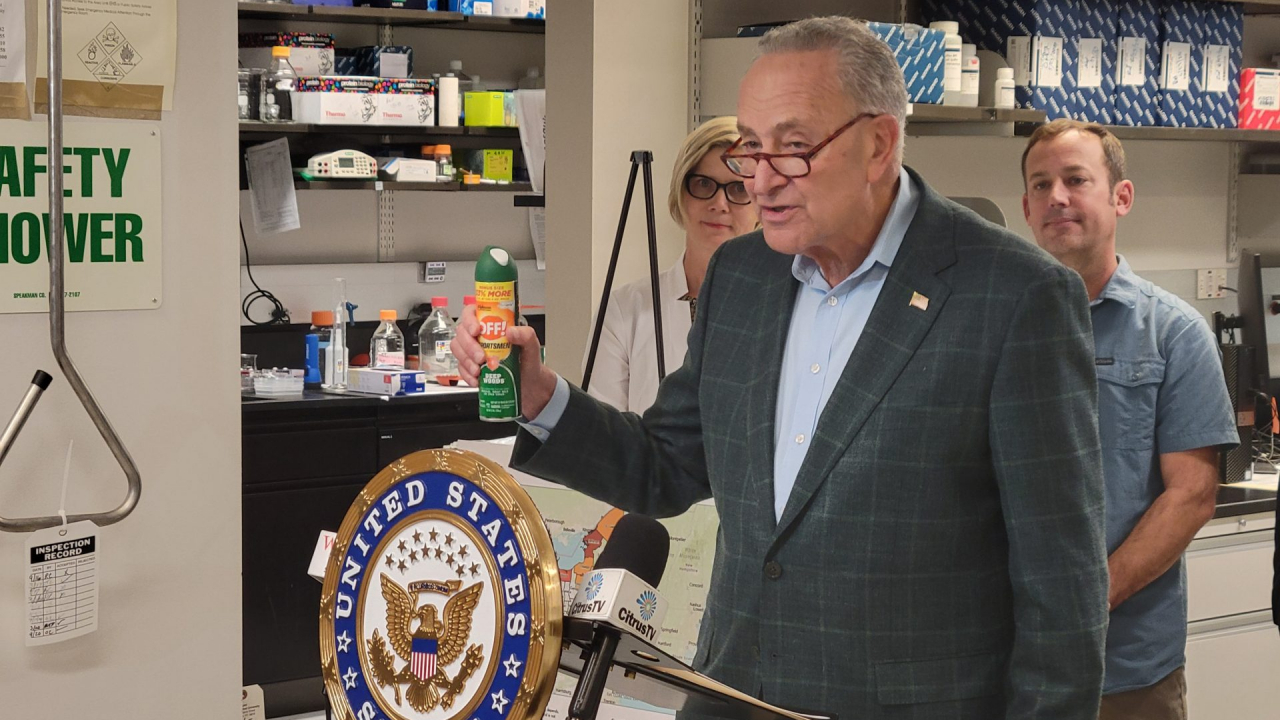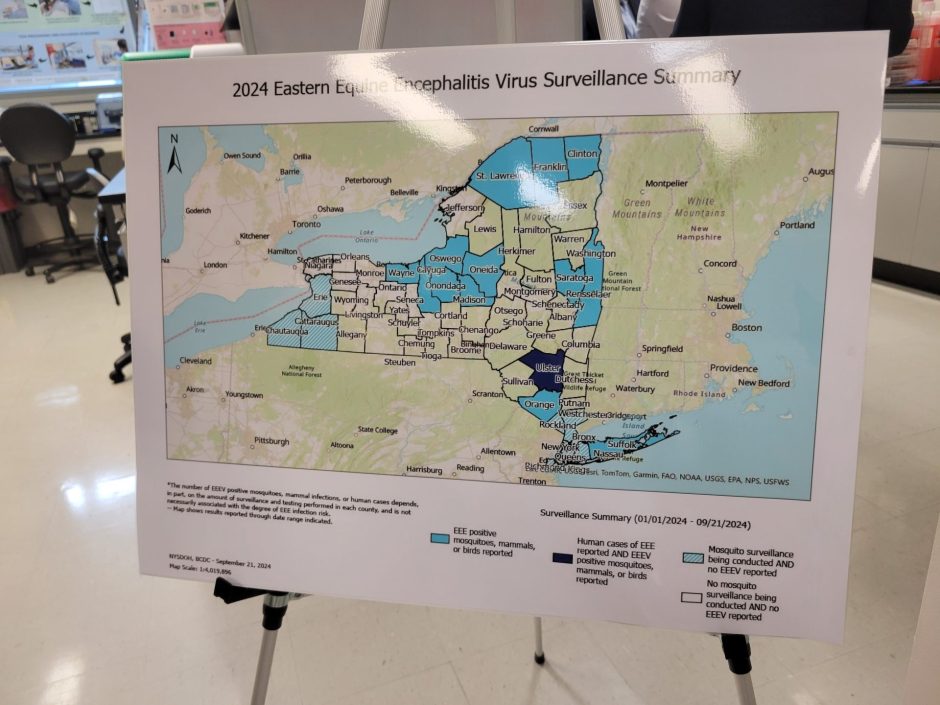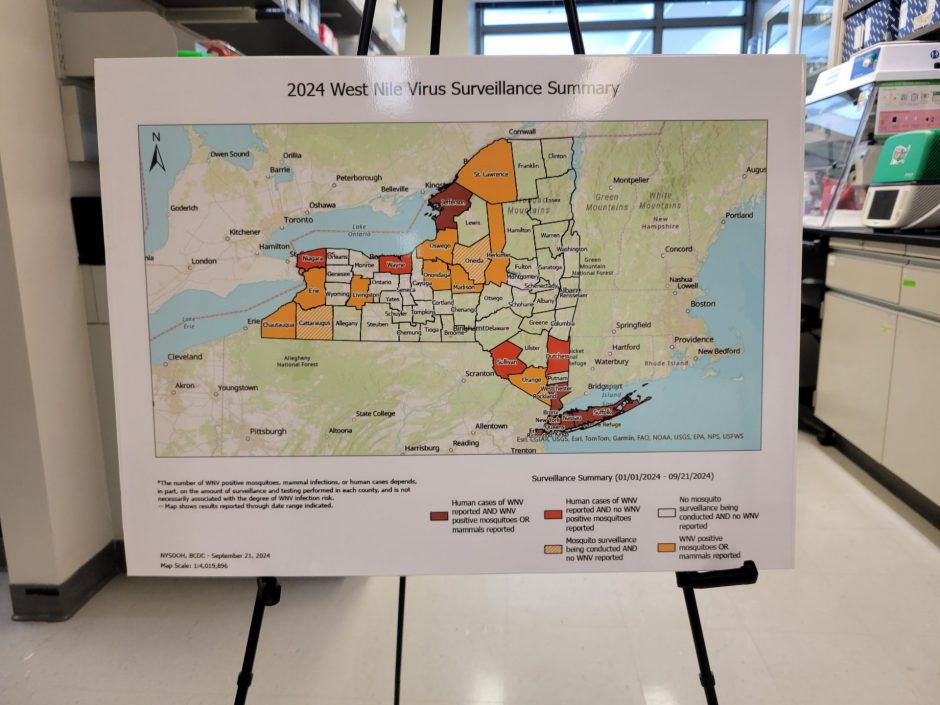
Syracuse N.Y. (NCC News)– Eastern Equine Encephalitis, also known as EEE, is appearing once more in Central New York, as testing showed many mosquitos carrying the disease and caused its first death in nearly 10 years.
EEE is a virus that originates in birds, transmitted to mosquitos, and ends up in humans and horses, where it stays in the body and is no longer transmissible. The disease is endemic to Central New York, meaning finding EEE is expected for this region. Symptoms include headaches, fevers, and chills suddenly a few days after infection. EEE develops into seizures, brain inflammation, and eventually a coma. There is no vaccine or cure for EEE. The best way to prevent it is not to get it.
David Larsen, Professor of Public Health at Syracuse University, said the best methods to avoid bites are using mosquito repellents, especially those containing DEET, wearing long sleeves and pants, and wearing lighter colors.
Another step in prevention is monitoring the mosquito population for diseases. “Public Health Departments are doing their job when we don’t hear of them,” said Larsen. “When people get food poisoning or other diseases, it’s Public Health’s job to trace it back and prevent it from happening again.”
One source of mosquitoes is the Cicero Swamp. Public health officials have found EEE positive and West Nile Virus positive mosquitoes in the swamp. Aerial spraying was conducted to kill infected mosquitoes and stop the spread of diseases. Oneida Lake has also tested positive at locations like Toad Harbor and Big Bay Swamp.
Senator Chuck Schumer held a press conference at SUNY Center for Vector Borne Disease to discuss action against EEE and West Nile Virus. He called for the Center for Disease Control and Prevention (CDC) and the Environmental Protection Agency (EPA) to coordinate and plan with New York State and local officials to survey and track mosquito populations. Schumer is pushing for $65 million more funding to the CDC’s Vector-Borne Diseases programs as well.
Expect mosquitoes to be around longer this fall because of the recent flooding and a very wet summer, according to Senator Schumer.
EEE is rare but still dangerous as a man in Ulster County died after contracting the virus last month. “Across New York, we have seen an unsettling spike in cases of EEEV among horses and West Nile Virus,” said Senator Schumer, “and tragically just last month we had our first death from EEEV since the last death of a Central NY-er almost a decade ago.”
New York State’s Department of Health has confirmed at least 18 cases in horses across Upstate New York and at least 33 positive mosquito pools. There have been 11 human cases of EEE in New York State since 1971 and seven were fatal.






